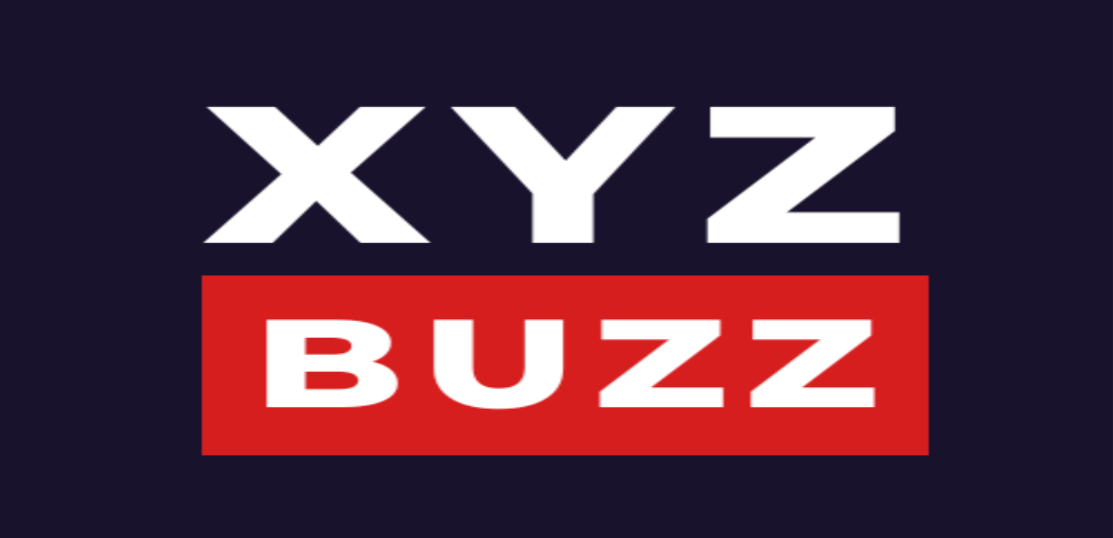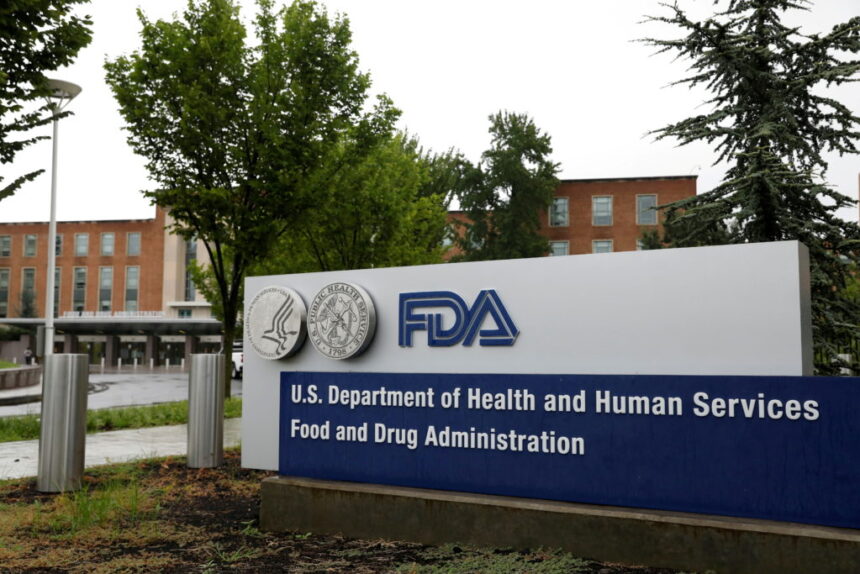Over the past few years, semaglutide—a potent glucagon-like peptide-1 (GLP-1) receptor agonist used in flagship diabetes and weight-loss medications such as Ozempic and Wegovy—has been in the headlines for all the wrong reasons. Since its first appearance on the FDA’s drug shortage list in early 2022, patients and healthcare providers alike have grappled with supply disruptions that made it difficult to obtain this life-changing therapy. Today, however, the FDA has officially declared that the semaglutide shortage is over. This landmark decision not only marks the end of a long period of uncertainty but also carries significant implications for patients, healthcare providers, drug compounding pharmacies, and the pharmaceutical market at large.
In this comprehensive article, we will delve into the full story behind the semaglutide shortage and its resolution. We will explore what semaglutide is, why it became so essential for treating diabetes and obesity, and what factors contributed to the shortage. We will then examine the critical role of the FDA and Novo Nordisk in addressing these supply challenges, as well as the impact on compounded versions of semaglutide that emerged during the crisis. Finally, we will consider the broader market and regulatory implications, offer consumer guidance, and look ahead to what this resolution means for the future of GLP-1 drugs.
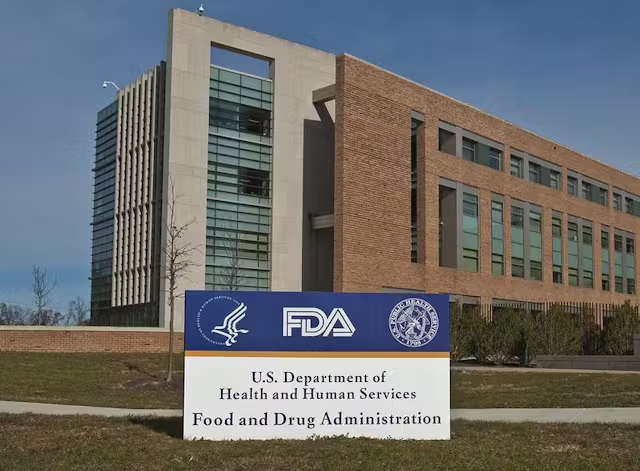
1. Introduction: A Turning Point for Semaglutide Supply
For more than three years, the healthcare community has experienced the ripple effects of a shortage that disrupted the lives of millions of people managing type 2 diabetes and obesity. Semaglutide, the active ingredient in the widely recognized drugs Ozempic and Wegovy, rapidly became a household name as it helped patients achieve significant improvements in blood sugar control and weight loss. However, as demand soared far beyond the available supply, shortages ensued, leading to widespread anxiety among patients and a thriving secondary market for compounded alternatives.
Now, with the FDA’s recent declaration that the shortage is resolved, a new chapter in the semaglutide story is unfolding. This article will provide a detailed, step-by-step exploration of the events leading up to this decision, the measures taken by manufacturers and regulators, and the future outlook for both branded and compounded GLP-1 products.
2. Understanding Semaglutide: Uses, Benefits, and Mechanism of Action
What Is Semaglutide?
Semaglutide is a synthetic analogue of the human glucagon-like peptide-1 (GLP-1) hormone. It functions as a GLP-1 receptor agonist, mimicking the effects of naturally occurring GLP-1 to enhance insulin secretion, suppress glucagon release, and slow gastric emptying. These actions help to lower blood sugar levels in patients with type 2 diabetes and have also been shown to promote weight loss, making semaglutide a dual-purpose therapeutic.
Therapeutic Applications
Semaglutide is used in two major therapeutic areas:
- Diabetes Management: As a key component of Ozempic, semaglutide helps regulate blood sugar levels, reduces the risk of major adverse cardiovascular events, and supports overall glycemic control in adults with type 2 diabetes.
- Weight Loss: Marketed under the brand name Wegovy for weight management, semaglutide significantly reduces appetite and increases feelings of fullness, leading to substantial weight loss in individuals with obesity or overweight conditions, often in conjunction with diet and exercise.
How Semaglutide Works
At the molecular level, semaglutide binds to GLP-1 receptors on pancreatic beta cells, enhancing the secretion of insulin when blood sugar levels are elevated. Simultaneously, it curbs the secretion of glucagon—a hormone that raises blood glucose—thereby maintaining a balanced glucose level. Its effect on delaying gastric emptying further contributes to a reduction in appetite, supporting weight loss in patients. The clinical benefits have made semaglutide a revolutionary treatment option, but its high demand has also contributed to supply challenges.
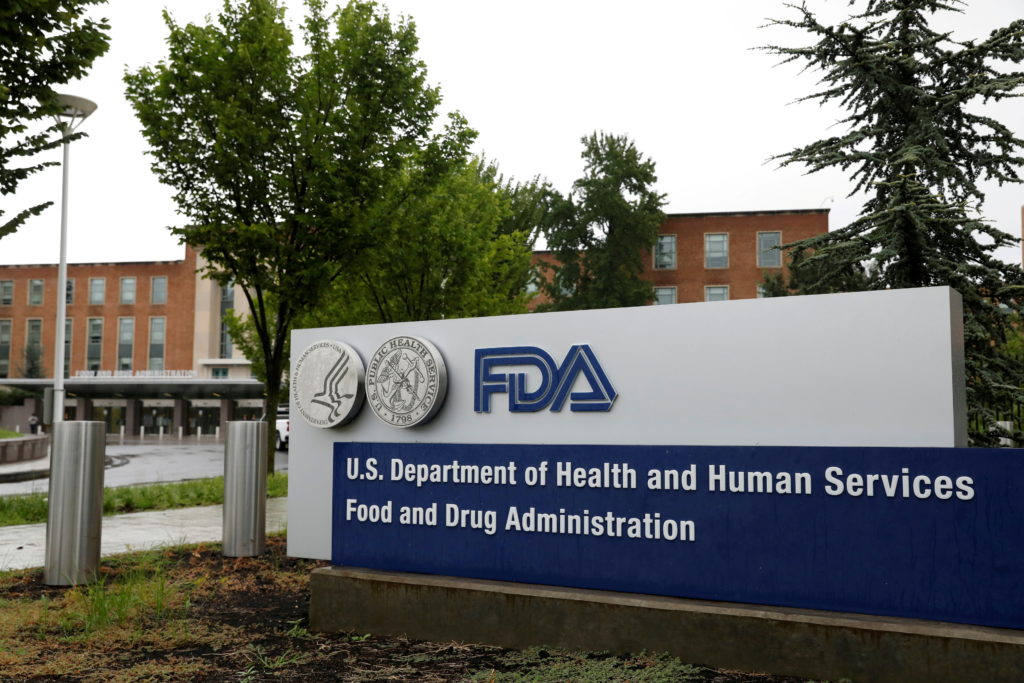
3. The Origins of the Semaglutide Shortage: A Perfect Storm
Soaring Demand Amid Unprecedented Need
The semaglutide shortage was not an isolated incident but rather the result of a confluence of factors. As awareness of the benefits of GLP-1 receptor agonists spread—fueled by impressive clinical trial results and real-world success stories—demand skyrocketed. Patients with type 2 diabetes and obesity were eager to access these therapies, and as a result, orders surged dramatically.
Furthermore, the transformative weight loss results and improvements in glycemic control made semaglutide a must-have for many, further straining the supply. Pharmaceutical companies, particularly Novo Nordisk, found that their production capacity was overwhelmed by the sheer volume of orders, leading to shortages that persisted despite efforts to scale up manufacturing.
Supply Chain Challenges
The global supply chain for pharmaceuticals is complex and can be disrupted by a multitude of factors:
- Manufacturing Capacity Limits: Production lines for semaglutide were not originally designed to handle the sudden surge in demand. Scaling up production involves significant investments in facilities, equipment, and workforce training.
- Raw Material Availability: The active pharmaceutical ingredient (API) and other critical raw materials required for semaglutide production may have faced shortages, compounding the production issues.
- Distribution Bottlenecks: Even as semaglutide is produced, ensuring its efficient distribution across the United States and globally presents logistical challenges, particularly when sudden surges in demand outpace the speed at which products can be delivered to wholesalers and pharmacies.
Impact of the Shortage on the Market
During the shortage, a secondary market for compounded semaglutide emerged. Compounding pharmacies—typically smaller, state-licensed operations or larger outsourcing facilities—began producing custom versions of semaglutide. These compounded drugs were offered at significantly lower prices compared to the branded products from Novo Nordisk, creating both an opportunity and a challenge:
- Opportunity for Patients: For some patients, compounded semaglutide provided access to a potentially life-changing medication at a fraction of the cost.
- Safety and Efficacy Concerns: Unlike FDA-approved medications, compounded versions do not undergo the same rigorous testing for safety, efficacy, and quality. Reports of dosing errors, impurities, and even adverse events began to surface, raising concerns among healthcare providers and regulators.
4. FDA Intervention: Regulatory Oversight in Action
The FDA’s Mandate and Response
The U.S. Food and Drug Administration (FDA) is charged with ensuring the safety, efficacy, and quality of drugs available to consumers. When semaglutide first appeared on the drug shortage list in March 2022, the FDA’s role was twofold:
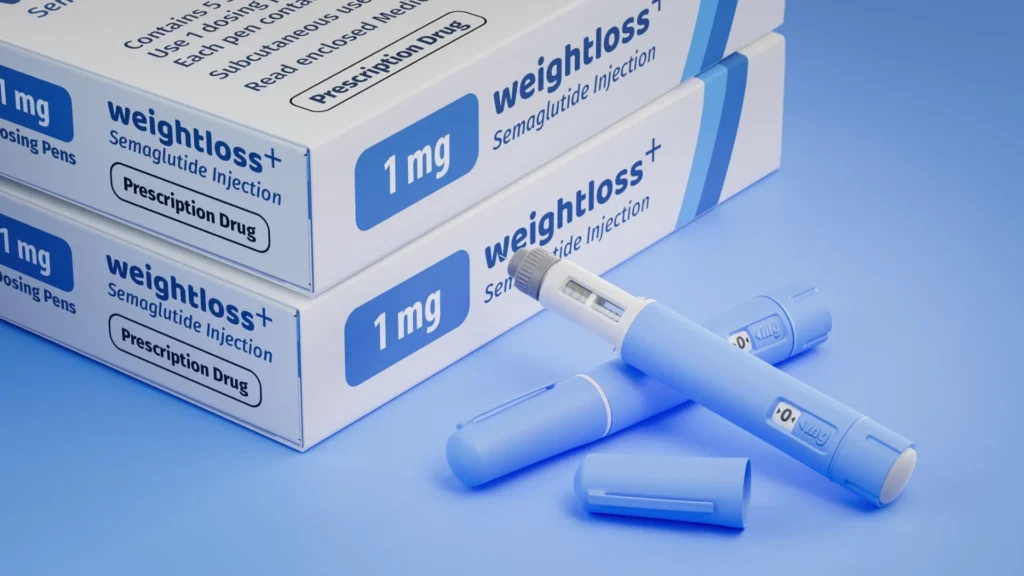
- Monitor and Evaluate: The agency monitored the supply and demand dynamics, working closely with Novo Nordisk and other stakeholders to assess production capacity.
- Facilitate Access: By listing semaglutide on the drug shortage list, the FDA allowed compounding pharmacies to legally produce off-brand versions to help fill the gap, ensuring that patients continued to have access to these critical medications.
Steps Toward Resolution
Over the ensuing months, Novo Nordisk made significant investments to ramp up production. The company expanded its manufacturing capabilities, optimized its supply chain logistics, and increased its inventory levels. As production caught up with demand, the FDA began receiving data indicating that the available supply could meet or exceed both current and projected demand on a national level.
On February 21, 2025, after thorough review and consultation with Novo Nordisk, the FDA updated its drug shortage list to remove semaglutide injection products. This decisive action signaled that the supply issues that had plagued the market were now resolved.
Enforcement Discretion for Compounders
One critical aspect of the FDA’s decision involved its policy on compounded versions of semaglutide. During the shortage, compounded GLP-1 drugs played a significant role in providing alternatives for patients. However, once the shortage is resolved, the FDA must ensure that only FDA-approved products are available to prevent potential safety risks.
To that end, the FDA has set clear deadlines for compounders:
- State-Licensed Compounders (Section 503A): These pharmacies or physician compounders are given until April 22, 2025, to cease producing compounded semaglutide products that are essentially copies of the FDA-approved drugs.
- Outsourcing Facilities (Section 503B): Larger facilities, which follow stricter manufacturing guidelines, have until May 22, 2025, to wind down the production of these compounded drugs.
This enforcement discretion is designed to provide an orderly transition for patients and providers, minimizing any disruption in treatment while ensuring that only safe, tested medications remain on the market.
Communication and Transparency
The FDA’s announcement was accompanied by a detailed press release and updates to its drug shortage database. The agency outlined its rationale for determining that the semaglutide shortage was resolved, including data on manufacturing capacity, inventory levels, and supply chain performance. In doing so, the FDA aimed to reassure the public that patients would no longer face the challenges associated with accessing these vital medications.
5. Novo Nordisk’s Role: Meeting National Demand
Investments in Production Capacity
Novo Nordisk, the manufacturer behind Ozempic and Wegovy, has been at the forefront of addressing the semaglutide shortage. Recognizing the critical need for increased supply, the company made significant capital investments to expand its manufacturing facilities. Running production lines 24 hours a day and hiring additional staff were key strategies that enabled Novo Nordisk to boost output.
Strategic Partnerships and Supply Chain Optimization
In addition to expanding manufacturing capacity, Novo Nordisk engaged in strategic partnerships with suppliers and distributors. These collaborations helped streamline the supply chain, reduce bottlenecks, and ensure that finished products could be efficiently delivered to wholesalers and, ultimately, pharmacies. By integrating advanced logistics and real-time inventory tracking systems, the company enhanced its ability to meet national demand.
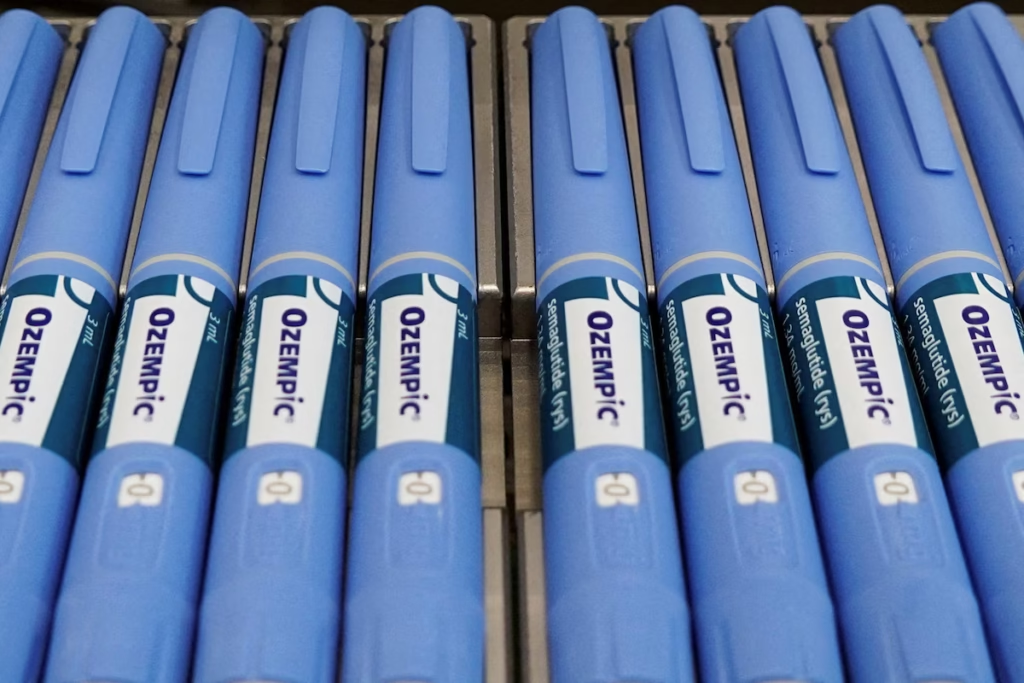
Impact on the Market
The resolution of the semaglutide shortage has major implications for the pharmaceutical market:
- Restoration of Trust: Patients and healthcare providers who experienced difficulties accessing Ozempic and Wegovy can now expect a more reliable supply.
- Pressure on Compounded Products: With the FDA’s decision, compounded versions of semaglutide will soon be phased out, potentially reducing the availability of cheaper, off-brand alternatives.
- Economic Benefits: Increased production and stable supply can help control the cost of semaglutide products, benefiting both patients and insurers.
Legal and Competitive Considerations
Novo Nordisk has not been without its challenges. During the shortage, the company filed multiple lawsuits against compounding pharmacies and other entities producing off-brand semaglutide products, alleging trademark infringement and unfair competition. With the shortage now resolved, Novo Nordisk is taking legal steps to further restrict the production of counterfeit or substandard semaglutide. This aggressive legal stance is aimed at protecting the integrity of the FDA-approved products and ensuring patient safety.
6. Impact on Patients: Improved Access to Life-Changing Medications
The Role of Semaglutide in Diabetes and Weight Management
Semaglutide’s unique mechanism of action has made it a cornerstone in the treatment of type 2 diabetes and obesity. For patients with type 2 diabetes, semaglutide helps improve glycemic control, reduce the risk of cardiovascular events, and support overall metabolic health. For those struggling with obesity, the drug’s ability to suppress appetite and promote weight loss has been transformative.
Challenges During the Shortage
During the semaglutide shortage, many patients encountered significant challenges:
- Delayed Prescriptions: With limited supplies available, some patients faced delays in getting their prescriptions filled, forcing them to seek alternative therapies.
- Increased Costs: The scarcity of semaglutide drove up prices in secondary markets, making it less affordable for many patients.
- Reliance on Compounded Products: Many healthcare providers turned to compounded versions of semaglutide to fill the gap. However, these alternatives often came with concerns about dosing accuracy, quality, and safety.
Relief Following the Resolution
With the FDA’s declaration that the semaglutide shortage is over, patients can expect several positive outcomes:
- Steadier Supply: Pharmacies are now expected to receive a consistent supply of Ozempic and Wegovy, reducing the anxiety associated with medication shortages.
- Improved Affordability: As supply stabilizes, market pressures may help moderate the price, potentially reducing out-of-pocket costs for patients.
- Return to Approved Medications: Patients who were forced to use compounded alternatives will be able to transition back to the FDA-approved drugs, which have undergone rigorous safety and efficacy testing.
Continuing Challenges and Considerations
While the resolution of the shortage is welcome news, some challenges remain:

- Localized Disruptions: Even though the national shortage is declared resolved, patients might still experience intermittent local supply issues as the drugs move through the distribution network.
- Insurance Coverage: High costs and complex insurance policies have historically made access to semaglutide challenging for some patients. Stakeholders will be watching closely to see if improved supply translates into better coverage and affordability.
- Patient Education: It is crucial that patients understand the difference between FDA-approved products and compounded alternatives, especially in terms of safety, quality, and efficacy. Healthcare providers and pharmacies play a key role in ensuring that patients receive accurate information.
7. Compounded Medications: The Rise and Fall of Off-Brand Semaglutide
What Are Compounded Medications?
Compounded medications are custom-made drugs prepared by pharmacies to meet the specific needs of individual patients. These formulations can vary in dosage, form, or even in the combination of active ingredients and excipients. In times of drug shortages, compounding pharmacies are allowed to produce versions of FDA-approved drugs to ensure continued patient access.
The Emergence of Compounded Semaglutide
During the semaglutide shortage, many compounding pharmacies began producing off-brand versions of semaglutide. These compounded formulations were often offered at significantly lower prices than the FDA-approved versions. For many patients, compounded semaglutide became a lifeline during a period when obtaining Ozempic or Wegovy was fraught with delays and high costs.
Regulatory Oversight and Safety Concerns
While compounded medications can fill gaps during shortages, they come with inherent risks:
- Quality Control: Unlike FDA-approved drugs, compounded medications are not subject to the same rigorous testing for safety, efficacy, and quality.
- Dosing Errors: There have been multiple reports of dosing errors with compounded semaglutide, potentially leading to adverse health events.
- Inconsistent Formulations: Variability in the compounding process can result in products that do not consistently meet therapeutic standards.
FDA’s Policy Shift
Now that the FDA has declared the semaglutide shortage over, regulatory measures are being enforced to curtail the production of compounded semaglutide:
- Deadlines for Compounders: State-licensed pharmacies and physicians compounding under section 503A have been given until April 22, 2025, to cease production of compounded semaglutide that is essentially identical to the FDA-approved product. Larger outsourcing facilities under section 503B have until May 22, 2025, to stop production.
- Implications for the Compounding Industry: This move is expected to significantly impact the market for off-brand GLP-1 drugs, as companies that have profited from the shortage will need to adjust their business models. For some, this could mean a sharp reduction in revenue, while for others, it may prompt a shift toward developing alternative formulations that comply with FDA standards.
Consumer Impact
For patients who have been using compounded semaglutide due to the shortage, this regulatory shift represents both a challenge and an opportunity:
- Transition to Branded Medications: Patients may need to switch back to FDA-approved products. Healthcare providers will need to carefully manage this transition to avoid disruptions in treatment.
- Potential Price Adjustments: With the phasing out of lower-cost compounded versions, patients might face higher costs unless insurance adjustments or generic alternatives are made available.
- Safety and Efficacy Improvements: Ultimately, returning to FDA-approved medications should improve overall treatment outcomes, as these products have been thoroughly evaluated for safety and quality.
8. A Timeline of the Semaglutide Shortage and Its Resolution
Understanding the sequence of events leading to the resolution of the semaglutide shortage provides valuable insights into how such crises are managed at the highest levels. Below is a detailed timeline of key milestones:
Early 2022: The Onset of the Shortage
- March 2022: Semaglutide injection products, used in drugs such as Wegovy and later Ozempic, are added to the FDA’s drug shortage list as demand surges beyond available supply.
- Mid-2022: Supply chain constraints and manufacturing capacity issues become apparent as orders for semaglutide spike dramatically.
- Late 2022: Compounding pharmacies begin producing off-brand versions of semaglutide to fill the gap, offering the drug at much lower prices and fueling a secondary market.
2023: The Market Adapts
- Throughout 2023: Patients and healthcare providers face continued challenges accessing semaglutide. Reports of adverse events linked to compounded versions begin to surface, highlighting safety concerns.
- Regulatory Actions: The FDA issues multiple warnings about the use of compounded semaglutide, particularly citing issues such as dosing errors and potential contamination. Novo Nordisk, the manufacturer, initiates legal actions against compounders producing unsafe or counterfeit versions.
Late 2023 to Early 2024: Steps Toward Resolution
- December 2023: The FDA and Novo Nordisk announce that efforts are underway to increase production capacity and stabilize the supply of semaglutide injection products.
- Early 2024: Improved manufacturing processes and investments in production lead to incremental increases in supply. The compounded semaglutide market begins to feel pressure as FDA warnings intensify.
October 2024: Indications of Recovery
- October 2024: The FDA notes on its website that semaglutide injection products are now available in nearly all presentations, though intermittent localized supply disruptions may still occur.
- Regulatory Updates: The FDA begins planning the removal of semaglutide from its drug shortage list, setting the stage for the final resolution.
February 2025: The Shortage Is Officially Resolved
- February 21, 2025: In a decisive press release and updated drug shortage list, the FDA declares that the shortage of semaglutide injection products is resolved. Novo Nordisk confirms that its manufacturing capacity now meets or exceeds both current and projected national demand.
- Compounding Pharmacies Notified: The FDA announces that state-licensed compounders (under section 503A) must cease production by April 22, 2025, and larger outsourcing facilities (under section 503B) by May 22, 2025.
- Market Reactions: With the shortage resolved, attention shifts to the impact on the market for compounded versions of semaglutide and the broader economic implications for companies that relied on the shortage to sell alternative products.
9. Market and Economic Implications
The resolution of the semaglutide shortage carries significant implications for various market participants—from Novo Nordisk and large pharmaceutical companies to compounding pharmacies and even telehealth companies that have capitalized on the shortage.
Impact on Novo Nordisk and FDA-Approved Products
With the shortage declared over, Novo Nordisk stands to benefit in several ways:
- Restoration of Brand Integrity: Patients and healthcare providers can now access the FDA-approved semaglutide products—Ozempic and Wegovy—without resorting to compounded alternatives. This reinforces the safety and efficacy profile of the original products.
- Market Confidence: The resolution signals that Novo Nordisk’s investments in expanding production capacity have paid off, boosting confidence among investors and potentially increasing the company’s market share.
- Pricing Dynamics: With a steady supply, price fluctuations caused by scarcity may stabilize, benefiting both Novo Nordisk and the healthcare system by reducing the premium that patients previously had to pay during the shortage.
Challenges for the Compounding Industry
For compounding pharmacies, the end of the semaglutide shortage represents a major shift:
- Regulatory Pressure: With the FDA’s deadlines looming, compounders producing off-brand semaglutide must cease operations or risk enforcement actions. This will likely lead to a contraction in the market for compounded GLP-1 drugs.
- Loss of Revenue: Companies that had built their business models around producing compounded versions of semaglutide may face significant revenue declines. Some may attempt to pivot to other niche compounding opportunities, while others might exit the market entirely.
- Consumer Transition: Patients who have been using compounded semaglutide will need to transition back to FDA-approved products, which may involve changes in dosing, insurance coverage, and potentially higher costs.
Effects on Telehealth and Alternative Providers
Telehealth companies, particularly those that have offered compounded semaglutide as part of weight loss or diabetes management programs, are also affected:

- Stock Market Reactions: Recent reports indicate that shares of companies like Hims & Hers, which relied on the availability of compounded GLP-1 medications, have dropped sharply following the FDA’s announcement.
- Business Model Adjustments: These companies may need to revise their business models, possibly by developing or partnering for alternative treatments, such as offering generic versions of other GLP-1 drugs or investing in personalized medicine solutions.
- Competitive Landscape: As supply normalizes, patients may shift their preferences back to branded products, which could diminish the competitive advantage that telehealth providers had during the shortage.
Broader Economic Implications
Beyond individual companies, the resolution of the semaglutide shortage has broader economic consequences:
- Healthcare Costs: Improved supply and stable prices for semaglutide could help moderate healthcare costs, particularly for patients with type 2 diabetes and obesity who require these medications for long-term management.
- Investor Sentiment: For investors in the healthcare and pharmaceutical sectors, the resolution signals that companies are successfully overcoming supply chain challenges—a positive sign for the overall market.
- Global Supply Chains: The incident underscores the importance of robust supply chain management in the pharmaceutical industry. Lessons learned from this shortage may prompt companies worldwide to invest in more resilient manufacturing and distribution networks.
10. Future Outlook: What Comes Next for GLP-1 Drugs?
With the semaglutide shortage now resolved, industry experts are turning their attention to the future of GLP-1 drugs and the broader market landscape.
Ongoing Supply Chain Enhancements

Novo Nordisk’s success in ramping up production offers a blueprint for how pharmaceutical companies can overcome supply challenges. The investments made over the past few years—including expanding manufacturing facilities and optimizing supply chains—will likely serve as a model for other companies facing similar issues. Ongoing improvements in production technology and logistics will help ensure that future demand spikes do not lead to prolonged shortages.
Regulatory Evolution
The FDA’s handling of the semaglutide shortage may lead to regulatory changes that further protect consumers. For example:
- Enhanced Monitoring: The agency may implement more rigorous monitoring of manufacturing practices and inventory levels for critical medications.
- Stricter Enforcement for Compounders: As compounded medications come under greater scrutiny, the FDA might tighten enforcement of existing regulations or develop new guidelines to ensure that compounded drugs meet minimum safety standards.
- Improved Traceability Systems: Advancements in digital tracking and data analytics could improve traceability across the pharmaceutical supply chain, allowing for quicker identification of contamination or production issues.
Market Dynamics for Weight-Loss and Diabetes Drugs
The GLP-1 market is poised for continued growth, even as supply issues are resolved. Factors that could shape the future include:
- Increasing Demand: The prevalence of obesity and type 2 diabetes is rising globally, creating a sustained demand for effective treatments.
- Innovation in Drug Formulations: Ongoing research may lead to new formulations or delivery methods that improve patient adherence and outcomes.
- Competition and Pricing: As more companies enter the GLP-1 market—either with their own branded drugs or generic alternatives—competition may drive prices down, improving accessibility.
- Personalized Medicine: Advances in pharmacogenomics and personalized healthcare may allow for more tailored treatments that consider individual patient responses to GLP-1 drugs, leading to better outcomes and fewer side effects.
Implications for Compounded Medications
For the compounding industry, the resolution of the semaglutide shortage represents both a setback and an opportunity:
- Transition Strategies: Compounders may need to shift their focus to other areas where compounded medications remain essential, such as pediatric formulations, hormone replacement therapies, or customized pain management solutions.
- Innovation in Compounding: Some compounding pharmacies may invest in technology and quality assurance measures to differentiate their products, potentially even seeking FDA approval for certain compounded formulations.
- Market Consolidation: With the enforcement deadlines approaching, smaller compounding operations that cannot adapt may exit the market, leading to consolidation and potentially higher standards across the industry.
Patient and Provider Education
One of the lasting impacts of the semaglutide shortage has been the increased awareness of medication supply issues among patients and providers. Moving forward:
- Educational Initiatives: Healthcare providers may place greater emphasis on educating patients about the differences between FDA-approved medications and compounded alternatives.
- Enhanced Communication: Manufacturers and pharmacies might invest in more robust communication channels—through apps, websites, and patient portals—to alert patients about potential shortages or recalls in the future.
- Insurance and Cost Considerations: As supply stabilizes, insurance companies may re-evaluate their coverage policies for GLP-1 drugs, potentially making them more affordable and accessible for patients who need them.
Research and Development in GLP-1 Therapy
The rapid rise in the popularity of GLP-1 drugs has spurred significant investment in research and development:
- New Indications: Beyond diabetes and weight loss, researchers are exploring the potential of GLP-1 receptor agonists in treating other conditions, such as non-alcoholic fatty liver disease (NAFLD) and neurodegenerative disorders.
- Combination Therapies: There is growing interest in combining GLP-1 drugs with other therapeutic agents to enhance efficacy or reduce side effects.
- Long-Acting Formulations: Efforts to develop longer-acting versions of these medications could further improve patient compliance by reducing the frequency of injections.
Global Impact and Future Shortage Prevention
Although the semaglutide shortage in the United States has now been resolved, the global nature of pharmaceutical supply chains means that similar challenges could arise elsewhere:
- International Collaboration: Global regulatory bodies may work more closely together to share data and best practices, reducing the risk of future shortages.
- Investment in Local Production: Countries may seek to develop local manufacturing capabilities to reduce dependency on a limited number of global suppliers.
- Predictive Analytics: Enhanced forecasting models and data analytics can help predict demand spikes before they lead to shortages, allowing companies to proactively adjust production levels.
11. Consumer Guidance: Navigating the New Normal
For patients who have been affected by the semaglutide shortage and are now navigating the transition back to a stable supply of Ozempic and Wegovy, a few practical tips can help ensure a smooth process.
What Patients Need to Know

- Verify Your Medication: Always check the label on your medication to confirm that it is the FDA-approved product and not a compounded version. Look for clear labeling and official branding from Novo Nordisk.
- Speak with Your Healthcare Provider: If you have been using compounded semaglutide, consult with your doctor to determine whether you should transition back to the branded product. Your provider can help manage dosing and monitor any changes in your treatment plan.
- Stay Informed: Sign up for alerts from reputable sources such as the FDA, your local health department, and trusted medical news websites. Being informed will help you stay ahead of any future supply issues or recalls.
- Understand Insurance Coverage: Changes in supply dynamics may affect insurance coverage and pricing. Discuss any concerns with your insurance provider to ensure that your treatment remains affordable.
- Report Adverse Events: If you experience any side effects or issues with your medication, report them to your healthcare provider and the FDA’s MedWatch program. This helps regulators monitor safety and address any potential problems quickly.
Tips for a Smooth Transition
- Plan Ahead: If you know that your current supply of semaglutide is running low, ask your pharmacist or healthcare provider about the expected availability of the branded product. Early planning can help avoid gaps in treatment.
- Maintain a Medication Log: Keeping a record of your dosages, injection dates, and any side effects can be useful when adjusting to a new formulation.
- Ask Questions: Don’t hesitate to ask your provider about any differences between compounded and branded medications. Understanding these differences can ease any concerns and help you make informed decisions.
- Monitor Your Health: Regularly check your blood sugar levels (if you’re diabetic) and weight (if you’re using the medication for weight loss) to ensure that the treatment continues to work effectively during the transition.
- Utilize Support Networks: Many patient advocacy groups and online forums can offer guidance and support as you navigate changes in your medication regimen. These communities often share valuable tips and experiences that can help you adjust more comfortably.
12. Broader Implications: What the Resolution Means for the Healthcare Industry
Economic Impact
The resolution of the semaglutide shortage has far-reaching implications beyond just the availability of Ozempic and Wegovy:

- Stabilized Drug Prices: With a steady supply, market pressures that once drove up the cost of semaglutide may ease, potentially leading to more predictable pricing for insurers and patients alike.
- Investor Confidence: Pharmaceutical companies, particularly Novo Nordisk, may see improved investor sentiment as production capacity stabilizes and supply chain issues are resolved.
- Impact on Compounding Pharmacies: The phased withdrawal of compounded semaglutide products will force many compounding pharmacies to rethink their business models. This could lead to industry consolidation or a pivot to other specialty compounded medications.
- Market Shifts: Telehealth companies and alternative providers that benefited from the shortage might experience shifts in their revenue streams, prompting them to explore new strategies or product lines to maintain their market share.
Regulatory and Policy Considerations
The semaglutide shortage and its eventual resolution serve as a case study for how regulatory bodies and manufacturers can work together to manage drug shortages:
- Enhanced Oversight: The FDA’s proactive approach, including detailed monitoring of supply and demand and clear deadlines for compounders, sets a precedent for handling future shortages of other critical drugs.
- Policy Adjustments: Regulatory frameworks may evolve to include stricter guidelines for compounded medications, especially for high-risk injectable drugs. These changes could improve safety standards and reduce the risk of future outbreaks or adverse events.
- International Cooperation: Given that many drugs are produced in global supply chains, international regulatory bodies may collaborate more closely to ensure consistent standards and efficient communication during shortages.
- Investment in Infrastructure: The experience of the semaglutide shortage may encourage both public and private sectors to invest more in pharmaceutical manufacturing infrastructure, ensuring that supply can meet demand even during periods of sudden surge.
Impact on Patient Care
For patients, the end of the semaglutide shortage is a welcome relief, but it also comes with new considerations:
- Improved Access: A stable supply of FDA-approved semaglutide means that more patients will have consistent access to the medications they rely on for managing diabetes and obesity.
- Transition Challenges: Patients who have been using compounded versions may need support during the transition back to branded products. Healthcare providers must work closely with patients to adjust dosages and manage any potential side effects.
- Long-Term Health Outcomes: With consistent access to high-quality, FDA-approved medications, patients can expect better long-term outcomes, including improved glycemic control and sustainable weight loss, which are critical for reducing the risk of complications associated with diabetes and obesity.
13. Lessons Learned and Future Directions
Strengthening the Supply Chain
One of the key lessons from the semaglutide shortage is the importance of a robust, agile supply chain. Pharmaceutical companies and regulators must work together to anticipate demand surges and invest in capacity well before shortages occur. This proactive approach can prevent disruptions and ensure that critical medications are always available when patients need them.
Enhancing Regulatory Frameworks
The FDA’s handling of the semaglutide shortage offers valuable insights into how regulatory frameworks can be enhanced:
- Real-Time Monitoring: Incorporating advanced data analytics and real-time monitoring systems into the regulatory process can provide early warning signals for potential shortages.
- Streamlined Communication: Clear, timely communication between manufacturers, regulators, and healthcare providers is essential. Future policies might mandate even more transparent reporting mechanisms to keep all stakeholders informed.
- Balanced Enforcement: The FDA’s enforcement discretion for compounded medications strikes a balance between maintaining access during shortages and protecting patient safety once the shortage is resolved. Future regulatory adjustments may refine these guidelines further to reduce ambiguity and enhance compliance.
The Role of Innovation in Drug Production

Innovation is critical for preventing future drug shortages. Advances in biotechnology, manufacturing processes, and supply chain management can help pharmaceutical companies scale production more rapidly:
- Automation and AI: Implementing automation and artificial intelligence in manufacturing can improve production efficiency and reduce the risk of human error. AI-powered predictive analytics can also help forecast demand more accurately.
- Flexible Manufacturing Facilities: Investing in flexible production facilities that can quickly adapt to changing demand levels is essential. Such facilities can pivot between different products as needed, reducing downtime and waste.
- Collaborative Partnerships: Pharmaceutical companies may increasingly form strategic partnerships with contract manufacturing organizations (CMOs) and logistics providers to ensure that production and distribution channels are resilient and responsive to market changes.
Implications for the Compounding Industry
The resolution of the semaglutide shortage is a double-edged sword for the compounding industry:
- Regulatory Compliance: Companies producing compounded versions of semaglutide will need to adapt to new deadlines and stricter oversight. This may prompt some firms to invest in better quality control systems or, conversely, exit the market.
- Opportunities for Diversification: In response to these regulatory pressures, compounders may diversify their product lines, focusing on other medications where there is still a critical need for custom formulations.
- Consumer Trust: Ensuring that compounded medications are safe and effective is vital for maintaining consumer trust. Increased regulatory scrutiny and industry best practices can help raise the standard of compounded drugs overall, benefiting patients who rely on them.
Long-Term Outlook for GLP-1 Therapies
The GLP-1 drug market is likely to continue evolving rapidly, driven by ongoing research, rising global demand for effective diabetes and weight-loss treatments, and increased competition:

- New Therapeutic Applications: Researchers are exploring additional uses for GLP-1 receptor agonists beyond diabetes and weight loss. These could include treatments for conditions such as non-alcoholic fatty liver disease (NAFLD) or even neurodegenerative disorders.
- Competition and Innovation: As more companies enter the GLP-1 market, competition is expected to intensify. This could lead to innovations in drug formulations, delivery mechanisms, and pricing strategies that ultimately benefit patients.
- Global Market Dynamics: While the current discussion has centered on the U.S. market, GLP-1 therapies are in demand worldwide. Differences in healthcare systems, insurance coverage, and manufacturing capacities will shape the global landscape for these drugs.
- Patient-Centric Approaches: The trend toward personalized medicine is likely to influence the future of GLP-1 therapies. Tailoring treatments to individual patient needs—such as adjusting doses or combining therapies—can improve outcomes and reduce side effects.
14. Frequently Asked Questions (FAQs)
Q: What is semaglutide and why is it important?
A: Semaglutide is a GLP-1 receptor agonist used in medications like Ozempic and Wegovy to help manage type 2 diabetes and promote weight loss. Its unique action on insulin secretion and appetite regulation has made it a critical drug for millions of patients.
Q: What caused the semaglutide shortage?
A: The shortage was primarily caused by an unprecedented surge in demand that outpaced existing manufacturing capacity. Supply chain constraints and raw material availability issues further exacerbated the situation.
Q: How did the FDA resolve the shortage?
A: The FDA declared the shortage over after reviewing production data and confirming that Novo Nordisk’s manufacturing capacity now meets or exceeds current and projected national demand. The agency updated its drug shortage list and set deadlines for compounded versions to cease production.
Q: What does the FDA’s decision mean for compounded semaglutide products?
A: The FDA’s decision requires state-licensed compounders (under section 503A) to stop producing compounded semaglutide by April 22, 2025, and outsourcing facilities (under section 503B) by May 22, 2025. This is intended to ensure that only the FDA-approved products are available.
Q: Will patients see any disruption in their treatment?
A: While the national shortage is declared resolved, patients may experience intermittent, localized supply disruptions as the drugs move through the distribution chain. However, overall access to Ozempic and Wegovy should improve significantly.
Q: How will this resolution affect drug prices?
A: With a stable supply, market pressures that previously drove up the prices during the shortage are likely to ease. This could lead to more predictable pricing for both patients and insurers.
Q: What steps can patients take to ensure they are receiving FDA-approved semaglutide?
A: Patients should verify their medication labels, check for official branding from Novo Nordisk, and consult their healthcare providers if they have concerns. It’s important to avoid purchasing semaglutide from unverified online sources.
Q: What are the long-term implications for the GLP-1 market?
A: The resolution of the shortage is expected to stabilize the market for GLP-1 therapies. It may also prompt further investments in production capacity, regulatory enhancements, and innovations in personalized medicine.
15. Conclusion: A New Era for Semaglutide Supply
The FDA’s recent declaration that the semaglutide shortage is over marks a pivotal moment for patients, healthcare providers, and the pharmaceutical industry. After a challenging period marked by high demand, production constraints, and the proliferation of compounded alternatives, a stable supply of semaglutide promises to restore confidence in critical weight-loss and diabetes treatments like Ozempic and Wegovy.
For Novo Nordisk, this resolution validates years of investments in production capacity and supply chain optimization. For patients, it means greater access to life-changing therapies without the uncertainty of shortages or the risks associated with unapproved compounded drugs. And for the compounding industry, it signals a time of significant adjustment, as regulatory deadlines force a return to reliance on FDA-approved products.
Looking forward, the lessons learned from this episode will likely drive further innovation and regulatory refinement. Enhanced monitoring, improved traceability, and robust contingency planning are all part of a new era in pharmaceutical manufacturing—one that aims to prevent shortages before they disrupt patient care.
In a world where chronic diseases like diabetes and obesity continue to challenge public health, ensuring a reliable supply of effective medications is more critical than ever. The end of the semaglutide shortage offers hope that future disruptions can be minimized and that the healthcare system will be better prepared to meet the evolving needs of patients.
As stakeholders across the spectrum—from manufacturers and regulators to healthcare providers and patients—reflect on this milestone, the emphasis remains clear: safety, quality, and accessibility must always be at the forefront of our collective efforts. With a renewed focus on these principles, the promise of a more resilient, patient-centered approach to drug supply becomes a reality.
The journey from crisis to resolution in the case of semaglutide serves as a powerful reminder of the importance of preparedness, transparency, and collaboration. It also underscores the remarkable progress that can be achieved when innovation meets regulatory oversight. For millions of patients relying on semaglutide for diabetes management and weight loss, the FDA’s declaration is not just a technical update—it is a beacon of hope for better health and improved quality of life.
